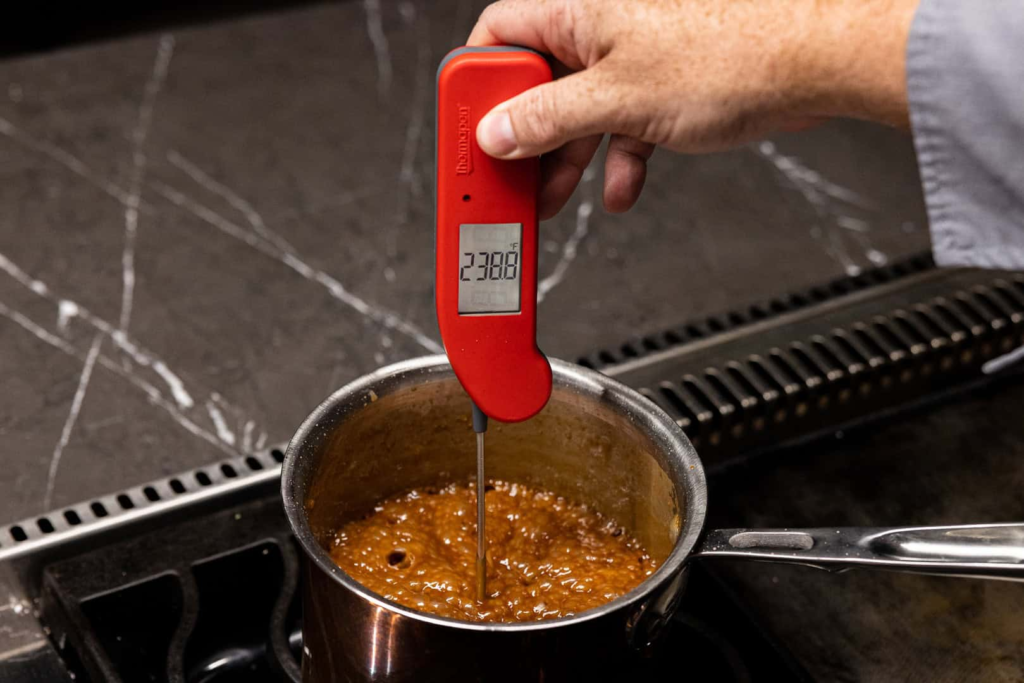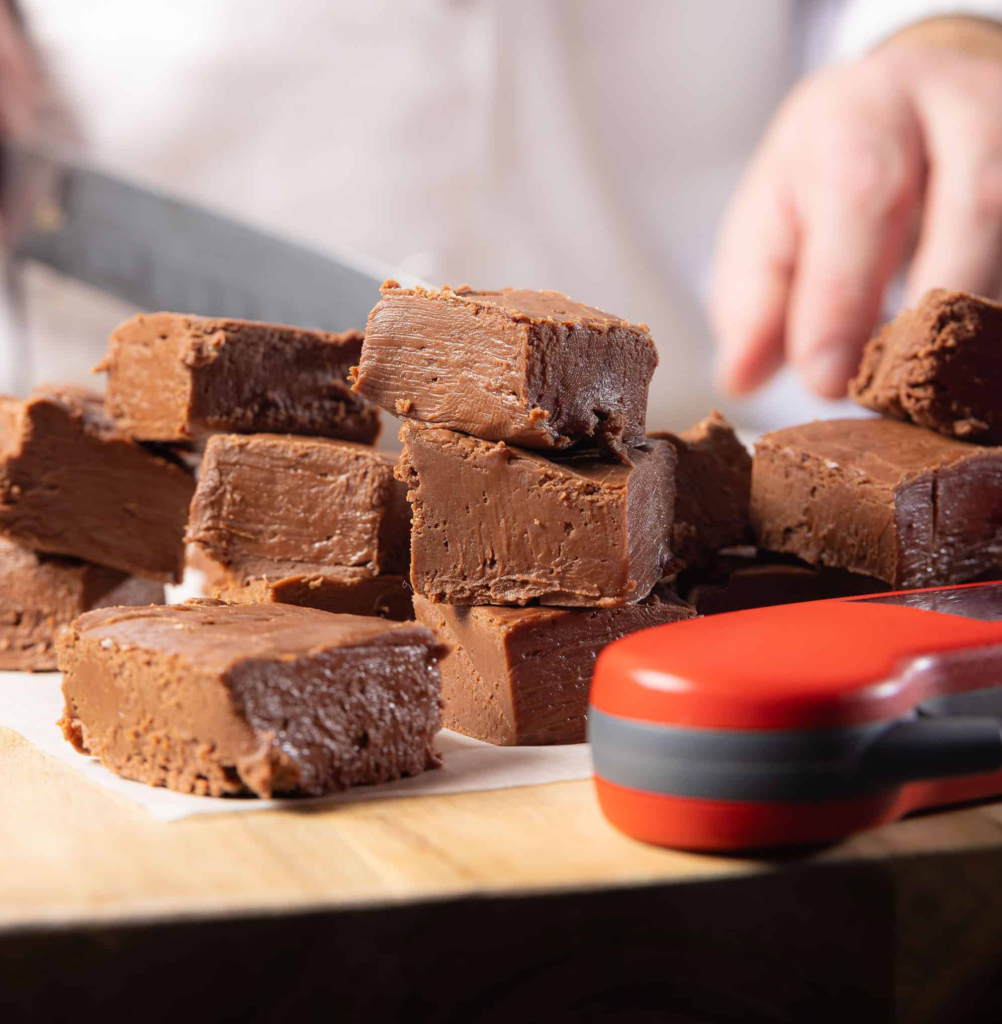Tempering chocolate can seem like a culinary mystery—one moment it’s silky smooth, and the next it’s dull or streaky. The secret to mastering this delicate process lies in precision, and that’s where a chocolate thermometer comes in.
Whether you’re a chocolatier, a home baker, or just a lover of sweets, a chocolate thermometer is your best friend for achieving that glossy finish and satisfying snap every time.
What Is a Chocolate Thermometer?
A chocolate thermometer is a specialized kitchen tool designed to measure temperatures with high accuracy during the chocolate tempering process. It ensures your chocolate stays within the exact temperature range needed to form stable crystals—key to perfect texture and shine.
It can come in various forms, such as:
- Digital probe thermometers
- Infrared thermometers
- Analog candy thermometers
The best chocolate thermometers are highly accurate within a narrow temperature range (typically 80°F to 130°F / 27°C to 54°C).

Why Tempering Chocolate Requires Precision
Tempering chocolate isn’t just a fancy chef trick—it’s science. During melting and cooling, cocoa butter forms different types of crystals. Only one type—Type V (5)—gives chocolate its ideal appearance and texture.
Benefits of Proper Tempering:
- ✅ Smooth, glossy finish
- ✅ Crisp snap when broken
- ✅ Resistance to melting at room temperature
- ✅ No gray streaks or fat bloom
Dangers of Improper Tempering:
- ❌ Dull or matte finish
- ❌ Greasy texture
- ❌ Uneven setting
- ❌ Unstable shelf life
Using a chocolate thermometer ensures you hit the target temperature zones at each stage of tempering.
Ideal Chocolate Temperatures by Type
| Chocolate Type | Melting Temp | Cooling Temp | Working Temp |
|---|---|---|---|
| Dark Chocolate | 115–120°F (46–49°C) | 82°F (28°C) | 88–90°F (31–32°C) |
| Milk Chocolate | 105–113°F (40–45°C) | 80°F (27°C) | 86–88°F (30–31°C) |
| White Chocolate | 100–110°F (37–43°C) | 78°F (26°C) | 84–86°F (29–30°C) |
Types of Chocolate Thermometers
Each type of thermometer has its pros and cons depending on your needs and budget:
| Type | Pros | Cons |
|---|---|---|
| Digital Probe | Fast, accurate, easy to read | Needs batteries, not fully waterproof |
| Infrared (IR) | No contact, quick scanning | Surface temp only, needs calibration |
| Analog Candy | No batteries, durable, high heat range | Slower response, harder to read |
| Thermocouple | Ultra-accurate, professional-grade | Expensive |
How to Use a Chocolate Thermometer: Step-by-Step
- Chop and melt your chocolate over a double boiler or microwave in short bursts.
- Insert the thermometer into the chocolate—ensure it doesn’t touch the bowl.
- Monitor the temperature closely as it melts.
- Cool it down by stirring or adding unmelted chocolate (seeding method).
- Use the thermometer to confirm you’ve reached the target working temperature.
- Maintain temp by placing the bowl over warm water as needed.
Tips for Perfect Tempering
- 🧼 Always clean your thermometer before and after each use to avoid contamination.
- 🔁 Stir constantly to distribute heat evenly.
- 🧊 Cool naturally—avoid the fridge unless molding.
- ✅ Use high-quality couverture chocolate for best results.

Choosing the Best Chocolate Thermometer
When selecting a chocolate thermometer, look for:
- ✅ High accuracy (±1°F or ±0.5°C)
- ✅ Fast response time
- ✅ Clear, easy-to-read display
- ✅ Food-grade material
- ✅ Temperature range of 70–140°F
Frequently Asked Questions (FAQs)
❓ Can I use a regular thermometer for chocolate?
You can, but it must be accurate within small ranges (±1°F). Many regular thermometers aren’t sensitive enough for chocolate work.
❓ Are infrared thermometers good for chocolate?
They’re great for surface temperature but may not show accurate readings for internal temperature unless stirred well.
❓ Can I reuse a chocolate thermometer for other recipes?
Yes! Most chocolate thermometers also work for candy-making, sugar syrup, sauces, and baking.

Final Thoughts
Tempering chocolate may seem intimidating, but with a reliable chocolate thermometer, you can control the process with confidence. From achieving that signature shine to creating chocolate that snaps, a thermometer is the most important tool you didn’t know you needed.
Whether you’re crafting truffles, dipping strawberries, or molding bars, precision is key—and the chocolate thermometer is your ticket to sweet success.

Leave a Reply